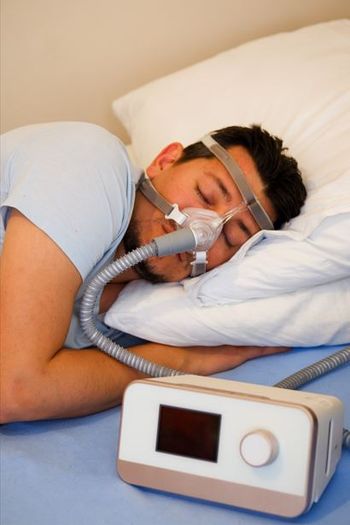
Abdominal Aortic Aneurysm With Impending Rupture
Lower back pain of 7 days' duration prompted a 79-year-old man to seek medical attention. The pain was localized to the left side of the back. Vital signs were stable. During the abdominal examination, a pulsatile mass was noted in the periumbilical region. The patient was admitted to the hospital.
Lower back pain of 7 days' duration prompted a 79-year-old man to seek medical attention. The pain was localized to the left side of the back. Vital signs were stable.
During the abdominal examination, Virendra Parikh, MD, of Fort Wayne, Ind, noted a pulsatile mass in the periumbilical region. The patient was admitted to the hospital.
A contrast-enhanced CT scan shows an 8.7 × 6.9-cm abdominal aortic aneurysm. Two small outpouchings, which represent a weakened aneurysmal wall, are visible along the lower lateral aspect of the aneurysm itself.
The patient underwent surgical resection of the aneurysm; he recovered uneventfully. At the time of surgery, the wall of the aneurysm was extremely thin on the left side, which indicated an impending rupture. Hypertension and atherosclerosis were the suspected causes of the aneurysm.
Abdominal aortic aneurysms cause the vessel to become larger than 1.5 times its normal diameter; they can also cause the distal aorta to exceed 3 cm. The aneurysm may expand until it ruptures spontaneously, causing exsanguination and death.
Hypotension, pulsatile abdominal mass, and flank or back pain constitute the classic triad of symptoms in patients with a ruptured abdominal aortic aneurysm. Mortality is substantial; 2 of 3 patients die before they arrive at the hospital.1 Of those who reach the hospital, as many as one fifth of those who die do so before surgery. The overall mortality rate averages about 50%. A high degree of clinical suspicion and rapid evaluation are crucial.
An alternative to surgical resection is aortic stent placement, which can be performed without an abdominal incision. Not all patients with abdominal aortic aneurysms are candidates for stenting.
References:
REFERENCE:
1.
Thomas PR, Stewart RD. Abdominal aortic aneurysm.
Br J Surg
. 1998;75:733-736.
Newsletter
Enhance your clinical practice with the Patient Care newsletter, offering the latest evidence-based guidelines, diagnostic insights, and treatment strategies for primary care physicians.


















































































































































































































































































